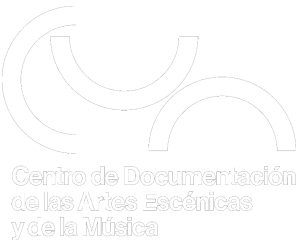Carl Czerny's Mechanical Reproductions (articles) Jordan Musser
Detalles de publicación: [Richmond (Va) American Musicological Society], 1991Descripción: pTipo de contenido: Texto (visual) Tipo de medio: Sin mediación Tema(s): Czerny, Carl 1791-1857 | Pedagogía musical | Estudios sobre las mujeres | Historia de la música | Música para instrumento de tecla | ComunicaciónResumen: This article reassesses the "mechanical" style of playing featured in Carl Czerny's pedagogical works and keyboard arrangements-specifically, the Complete Theorical and Practical Piano Forte School, op. 500 (1839), its supplementary text Letters to a Young Lady (ca. 1840), and the four-hand transcription of Beethoven's Symphony no. 9 in D Minor, op. 125 (the "Choral"). The first part of the article situates opus 500 within the larger pedagogical milieu of Biedermeier music culture and Johann Heinrich Pestalozzi's progressivist educational reforms, exploring the way it tasked predominantly women amateurs with assembling basic finger sensations in an exercise-by-exercise-"progressive"-fashion. The author proposes that this cumulative logic reflects an early-century epistemic norm-what Friedrich Kittler dubs a "mechanical program" of assembly and augmentation. The second part considers Czerny's transcription of the finale of Beethoven's Ninth from the perspective of ludo-musicology and cultural techniques media analysis, outlining the reductive and replicative-"reproductive" techniques by which Czerny accommodated his former teacher's work to the hands he shaped in the private sphere. The author argues that his pedagogies and transcriptions were recursively interrelated. Czerny was simultaneously a mechanic of the hand pedagogically and a mechanical reproducer of symphonies transcriptively, creating a multivalent corpus that forces us to rethink the media-theoretical concept of "mechanical reproduction" vis-à-vis "Discourse Network 1800".This article reassesses the "mechanical" style of playing featured in Carl Czerny's pedagogical works and keyboard arrangements-specifically, the Complete Theorical and Practical Piano Forte School, op. 500 (1839), its supplementary text Letters to a Young Lady (ca. 1840), and the four-hand transcription of Beethoven's Symphony no. 9 in D Minor, op. 125 (the "Choral"). The first part of the article situates opus 500 within the larger pedagogical milieu of Biedermeier music culture and Johann Heinrich Pestalozzi's progressivist educational reforms, exploring the way it tasked predominantly women amateurs with assembling basic finger sensations in an exercise-by-exercise-"progressive"-fashion. The author proposes that this cumulative logic reflects an early-century epistemic norm-what Friedrich Kittler dubs a "mechanical program" of assembly and augmentation. The second part considers Czerny's transcription of the finale of Beethoven's Ninth from the perspective of ludo-musicology and cultural techniques media analysis, outlining the reductive and replicative-"reproductive" techniques by which Czerny accommodated his former teacher's work to the hands he shaped in the private sphere. The author argues that his pedagogies and transcriptions were recursively interrelated. Czerny was simultaneously a mechanic of the hand pedagogically and a mechanical reproducer of symphonies transcriptively, creating a multivalent corpus that forces us to rethink the media-theoretical concept of "mechanical reproduction" vis-à-vis "Discourse Network 1800".


